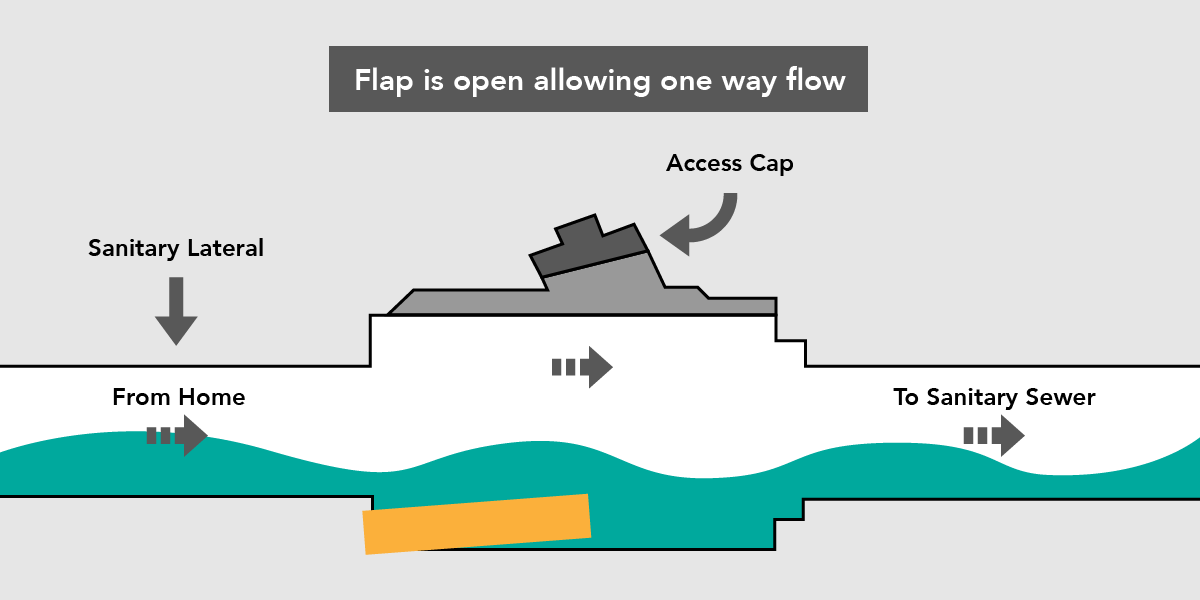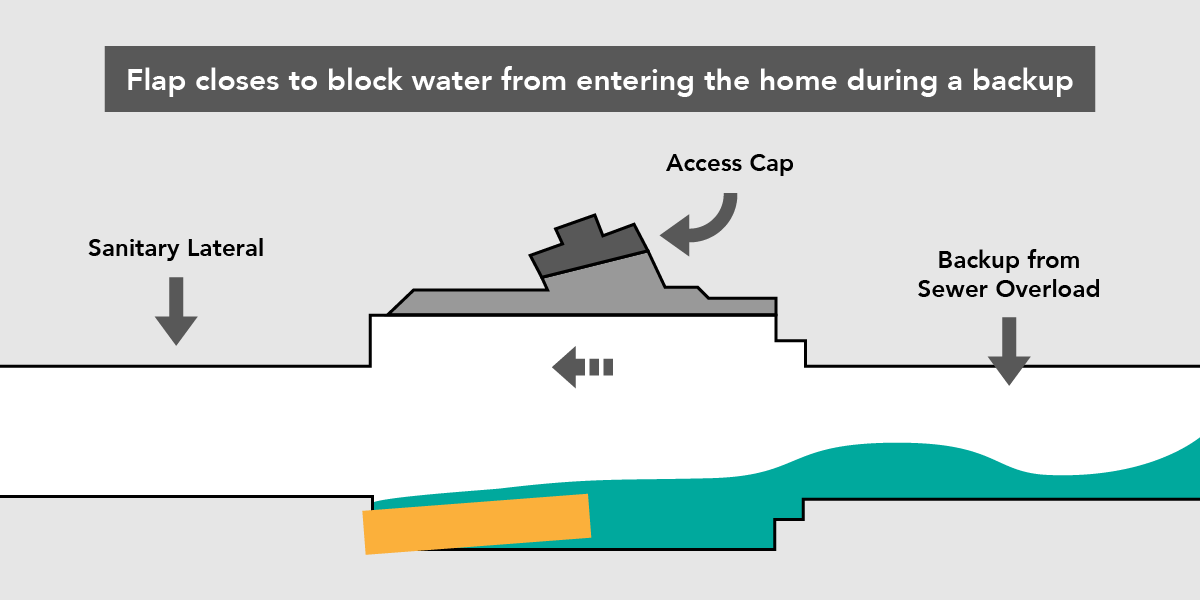A backwater valve prevents sewage from entering your home if the sewer line on your street is full.
Backwater Valve Grant Program
Grants are available to install backwater valves in your homes.
- Grants reimburse the costs of backwater valves and installations up to $1,500.
- Homeowners inside of flood hazard areas are eligible for up to $3,000 in reimbursement.
Maps
Properties in Zone 1 are eligible for up to $1,500. Properties in Zone 2 are eligible for up to $3,000. If your property is not identified in these maps, you are in Zone 1.
Process
- Hire a licensed plumber to install a backwater valve in your home; the plumber will obtain a plumbing permit to do the work. Do not cover the valve with carpet, flooring or other permanent fixtures before your inspection.
- After the valve is installed, arrange for a plumbing inspection online. Alternatively, contact Pulse to schedule an inspection.
- After you pass your plumbing inspection, complete this form for reimbursement. You'll need to include scans or photos of your Permit Services Report and your detailed receipt(s). Ensure no other work is included on the receipt, as we are unable to separate costs. Alternatively, call Pulse at 780-743-7000 and a customer service agent will fill out the form for you.
- If you're eligible, a cheque will be mailed to you 6-8 weeks after you submit your completed application. The process will take longer if you need to mail in receipts or your inspection form.
Mailing Address
Underground Services
Backwater Preventer Program
9909 Franklin Avenue
Fort McMurray, AB
T9H 2K4
Backwater valve - normal operation
Water flows out of your home without restriction.

Backwater valve - during a flood or sanitary backup
During a flood or sanitary backup, the backwater valve closes to prevent water from entering your home.

Links
- Application form (install the valve and get a plumbing inspection prior to filling out the form)
- Plumbing permits
- Inspections
FAQ
How does a backwater valve work?
A backwater valve remains open when wastewater is flowing out of a home but will close automatically if the flow reverses. This helps to prevent backups.
How do I know if I have a backwater valve?
Municipal bylaws require homes since 2000 to have backwater valves installed. If your home is older than that, you may need to install one.
How will the grants be administered?
The grants will be administered on a first-come, first-served basis starting on March 1, 2021.
I already have a backwater valve on my home. Can I claim retroactive reimbursement?
Homes that have had backwater valves installed since May 1, 2020 are eligible. Homes that had backwater valves installed prior to this date are ineligible.
Are there any risks associated with backwater valves?
Yes - they need regular maintenance in order to function properly. Additionally, when they're engaged they stop flow in both directions.
How do I maintain my backwater valve once installed?
Contact your valve manufacturer for more information.
I have a technical question - who should I speak with?
Call Pulse at 780-743-7000 and ask to be connected with Safety Codes.
Where is the backwater valve installed?
It’s installed on your sanitary service line, which connects your toilets, sinks, showers and other appliances to the Municipality’s sanitary sewer system. This is typically under the basement in the home. In some instances, they can be installed on the sanitary service line outside of the home.
How long will it take to install a backwater valve on my sanitary line?
It could take a day or longer, depending on a variety of factors including contractor availability. The procedure can be invasive depending on where the valve needs to be installed.
How do I activate a backwater valve during a flood event?
No activation is needed – backflow valves function automatically.
Will installing a backwater valve help me get insurance coverage?
Talk with your insurance broker. Once the valve is inspected, an inspection form is issued saying that the work was done to code; this report can be provided to insurers if they ask to see proof of the installation.
Is the grant available for commercial properties?
No, grant is only available for residential properties.
What about for residents who own multiple properties?
One grant for each property owned by the resident.
How long does it take to receive the grant funds?
Once all documentation is submitted to the Municipality, the grant funds should be received by the applicant within 6-8 weeks.
Can I apply for a grant if my plumbing fixtures are above street level?
No - only homes with plumbing below street level are eligible. In the case of mobile homes on wood or steel piles, there is no advantage to having a backwater valve installed. However, mobile homes on foundations with plumbing in the basement are eligible.
Why aren’t homes in Grayling Terrace eligible for the $3,000 grant?
Because of the way the sanitary system is built in Grayling Terrace, basements and the sanitary system are already effectively protected to the 1-in-200-year level from a river flooding event.
This can seem confusing at a glance because there are homes in the Lower Townsite that sit at a higher elevation. However, the sanitary system downtown is built in such a way that homes aren’t protected to the same level, even if they sit on higher ground.
Contact Us
PULSE
Submit a request
Phone: 780-743-7000
Toll free: 1-800-973-9663
Subscribe for RMWB updates
Stay up to date on the services, programs and projects in your neighbourhood!
